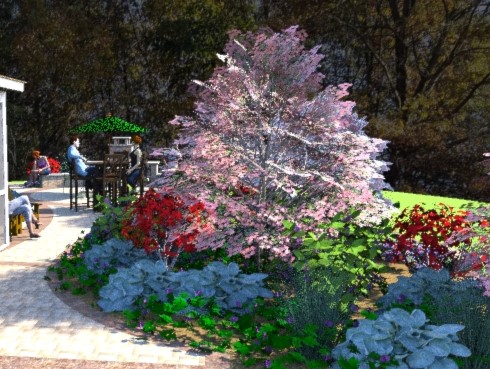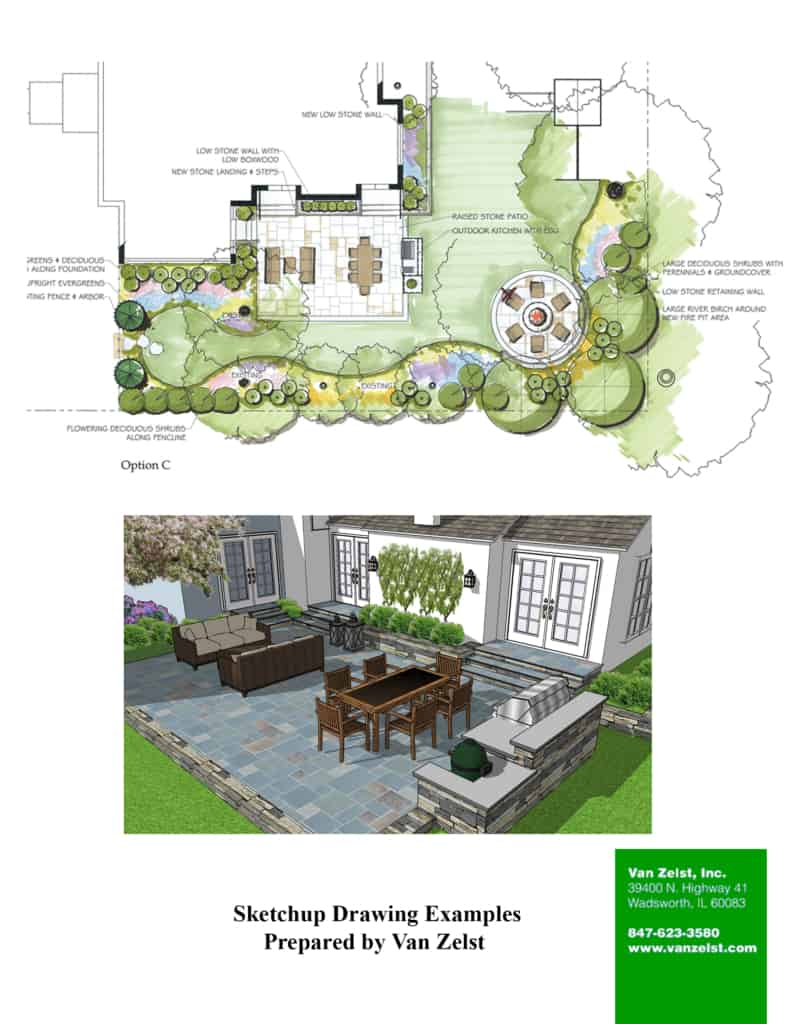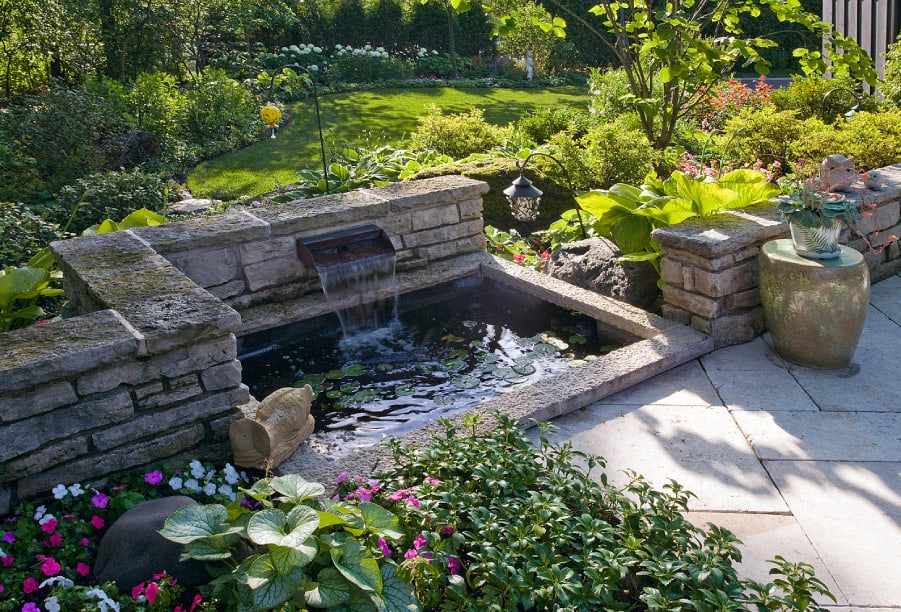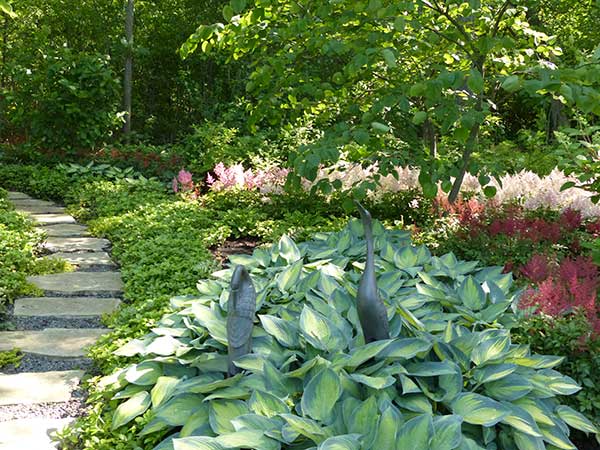Garden Depth Begins With 3D Layers: Planting for coverage and a unique blend of color, form and texture.

When Google put out their revolutionary design software, SketchUP, in 2010 it became a complete game changer for many novice 3D design professionals. All of a sudden, anyone could start playing around with buildings, interior and exterior spaces for FREE!
This trend appeared quickly within the landscape industry and early adopters of the software were able to grow in their skills with simple tutorials and transform their colorful landscape renderings from the rolled up page on the table to a visual fly through of a client’s future landscape. This presentation tool instantly bridged a gap that sometimes existed in the presentation of a two dimensional landscape plans; no matter how beautifully it was drawn and rendered to perfect scale and down to every horticultural detail, sometimes the client still had trouble visualizing the garden versus pictures on websites or magazines they had seen.

Additionally, this sometimes changed the way we as landscape designers and architects evaluated our own plans and thought in 3 dimensions of coverage. It is a staple of good landscape design principle to use the 3 elements of; color, form and texture to make for compelling landscape compositions that create depth and interest. However, occasionally, when drafting in 2 dimensions, some critical vertical zones are missed due to the form of adjacent plants creating a gap in the landscape. This is where seeing the same space in 3 dimensions can help in designing in layers to cover all of the height zones necessary both tp create a successful garden and an enchanting environment.
This principle translates from the drawn design concept to the garden through the use of plants with various heights to bring the building or surrounding landscape into scale. The use of differing heights of plants allows the site line to be broken and creates movement from one point to another. For instance a row of arborvitae, a most common hedge plant, does not create depth but rather a wall. But by planting other plants of varying heights in front of the arborvitae you soften the “wall” and create depth in the garden. Another important element to consider when creating successful layers is by using plants of different textures. For example, you might use a very thick lush groundcover such as Pachysandra, bordered by the lacey foliage plants such as Astilbe, set to a higher backdrop of the solid leaf of a Hosta or Ligularia and then a more open branching habit of a plant like Tiger Eyes Sumac or Judd Viburnum. Now that you have reached a height of 3-5’, you could look for a more solid backdrop such as Arrowwood Viburnum or a broadleaf evergreen such as Green Mountain Boxwood or a conifer like Arborvitae. Using plants with different foliage color is another great way to achieve proper layers in a successful garden planting. Dark greens vs. light greens, chartreuse shades, yellows, blue needles of conifers and a nice contrasting deep burgundy will make for some great companion plantings creating depth and interest. Utilizing the concept of three dimensional design and the 3 principles of color, form and texture will serve as a framework to establish a beautiful, head turning garden with depth and interest that will sustain the landscape for the lifespan of the plants chosen.

